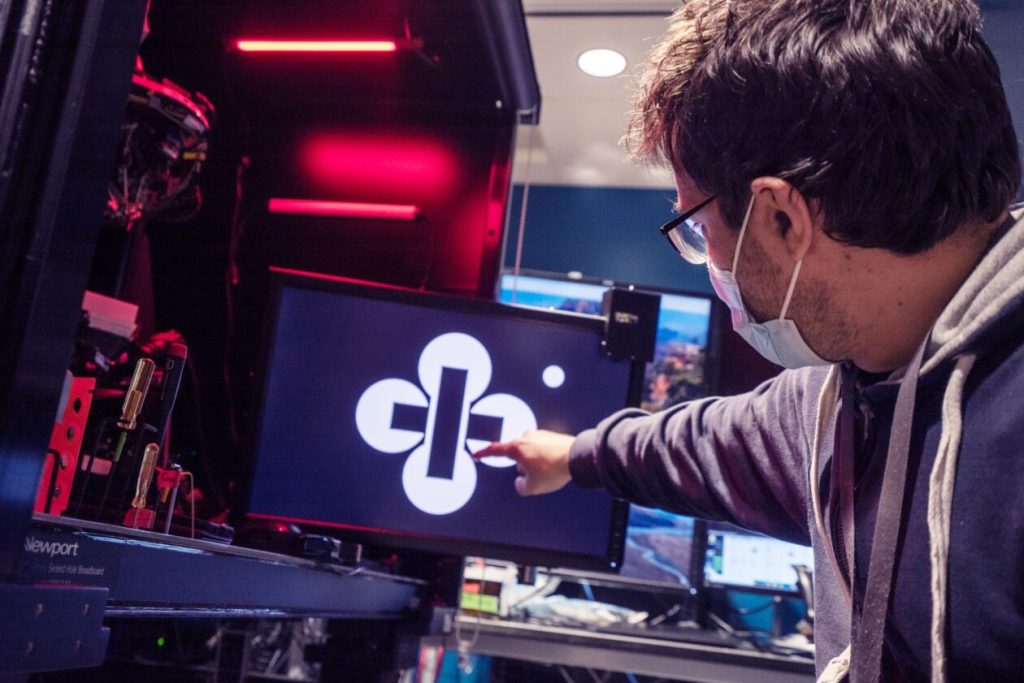The Brain’s Fascinating Ability to Fill in Visual Gaps
In the heart of neuroscience research, scientists at the Allen Institute for Brain Science in Seattle and the University of California at Berkeley have made remarkable strides in understanding how our brains create complete visual experiences from incomplete information. This groundbreaking study, published in Nature Neuroscience, explores the neural mechanisms behind our ability to “see” things that aren’t physically present—like perceiving shapes in optical illusions or detecting predators partially hidden in foliage. The research team, led by Berkeley neuroscientist Hillel Adesnik, identified specialized brain cells they’ve named “IC-encoder neurons” (illusion contour encoders) that play a crucial role in this perceptual phenomenon. “The goal of this project was to understand the neural basis of pattern completion, or filling in when you are dealt ambiguous or missing data in your vision,” Adesnik explained. This research represents a significant step toward understanding how our brains construct coherent visual experiences from fragmented sensory input, potentially offering insights into conditions like schizophrenia where visual processing goes awry.
The study employed an elegant experimental design using mice as subjects. Researchers presented the animals with various visual stimuli, including Pacman-like diagrams that create the illusion of a black bar between them (similar to the well-known Kanizsa Triangle illusion where viewers perceive shapes that aren’t explicitly drawn). The Allen Institute’s OpenScope Brain Observatory team meticulously recorded the neural responses to these illusions millisecond by millisecond, creating a comprehensive dataset that revealed brain-wide activity patterns during illusory perception. Jerome Lecoq, an associate investigator at the Allen Institute, highlighted the collaborative nature of this work: “The observatory provided access to what was going on during illusions across the brain. This allowed the experiment at Berkeley in Hillel Adesnik’s lab to dive deeper into local mechanics that implemented those illusions.” This partnership between institutions exemplifies a new model for neuroscience research, where specialized teams contribute complementary expertise to tackle complex questions about brain function.
With this rich dataset in hand, the Berkeley researchers identified a small population of neurons—the IC-encoders—that responded specifically to illusory contours but not to explicitly drawn lines. Using advanced techniques like two-photon calcium imaging and holographic optogenetics, they traced how neural activity flowed between these specialized cells and other regions of the visual cortex. This mapping revealed something remarkable about the process of perceptual completion: “The representation of the illusion arises in higher visual areas first, and then gets fed back to the primary visual cortex; and when that information is fed back, it’s received by these IC-encoders in the primary visual cortex,” explained lead study co-author Hyeyoung Shin. This finding challenges simpler models of visual processing by demonstrating a complex interplay between brain regions, where higher-level interpretations influence more basic visual processing in a recursive loop.
Perhaps the most fascinating experiment came when researchers activated these IC-encoder neurons while mice viewed only a blank gray screen. This artificial stimulation of specific neurons effectively created a “controlled hallucination” in the mouse brain, with downstream neurons responding as if an actual illusory contour was present. “When we looked at those downstream neurons, their activity patterns looked more similar to when there was an actual illusory contour on the screen than when there was nothing,” Adesnik said. While the researchers can’t definitively claim that the mice consciously perceived these hallucinations, the neural evidence strongly suggests that activating these specialized cells can initiate the same pattern completion processes that occur during natural visual perception. This experiment begins to bridge the gap between neural activity and subjective perceptual experience, though Adesnik notes that future studies could train mice to report their perceptions to more directly address what they actually “see.”
The implications of this research extend far beyond basic neuroscience, potentially informing our understanding of various neurological and psychiatric conditions. Jerome Lecoq pointed out the relevance to disorders like schizophrenia: “In certain diseases you have patterns of activity that emerge in your brain that are abnormal, and in schizophrenia these are related to object representations that pop up randomly. If you don’t understand how those objects are formed and a collective set of cells work together to make those representations emerge, you’re not going to be able to treat it; so understanding which cells and in which layer this activity occurs is helpful.” By identifying the specific neural mechanisms involved in constructing visual experiences—even when the sensory input is ambiguous or incomplete—this research may eventually contribute to more targeted treatments for conditions characterized by perceptual disturbances. Additionally, understanding how biological brains handle incomplete information could inspire more sophisticated computer vision systems that better approximate human-like visual processing.
The study also highlights an evolving model for collaborative neuroscience research exemplified by the Allen Institute’s OpenScope Brain Observatory, established in 2018. Lecoq compares their approach to astronomical research: “The astronomical observatory analogy here is the observatory doing the survey of the sky, while the lab focuses on a local relevant constellation to untangle what is going on.” In this model, specialized facilities provide comprehensive brain-wide data collection while partner laboratories contribute focused expertise to interpret specific aspects of neural function. “This is how we view our Brain Observatory in the future: We will provide brain-wide recordings of specific and important behaviors, defined by one or more laboratories. Then those laboratories can analyze those datasets and sometimes perform complementary experiments to uncover specific computational mechanisms in the brain,” Lecoq explained. “I am anticipating more research in neuroscience will be performed this way in the future.” This collaborative approach leverages the strengths of different research teams and technologies, potentially accelerating our understanding of the brain’s intricate workings and how they give rise to our rich perceptual experiences of the world.


